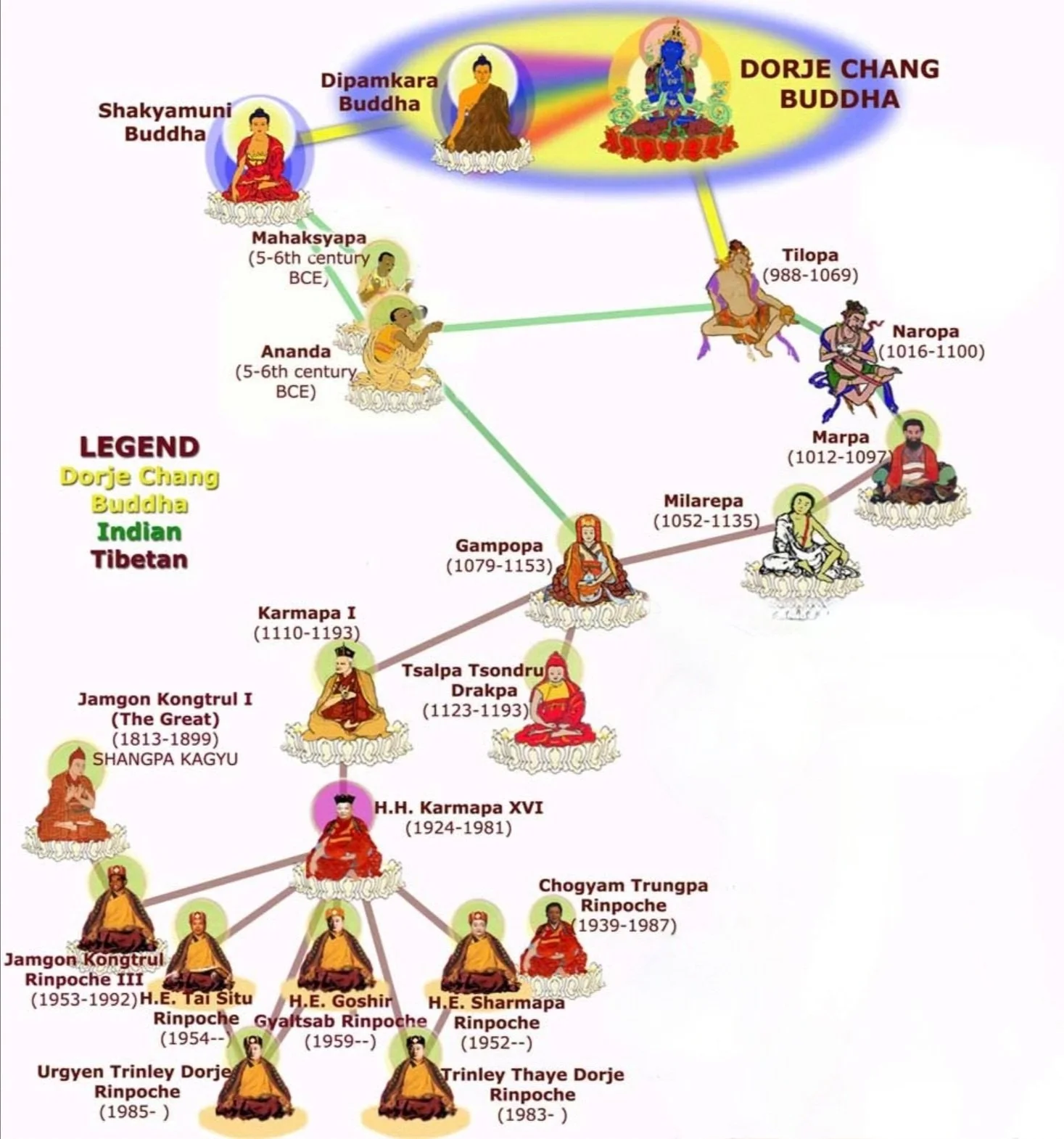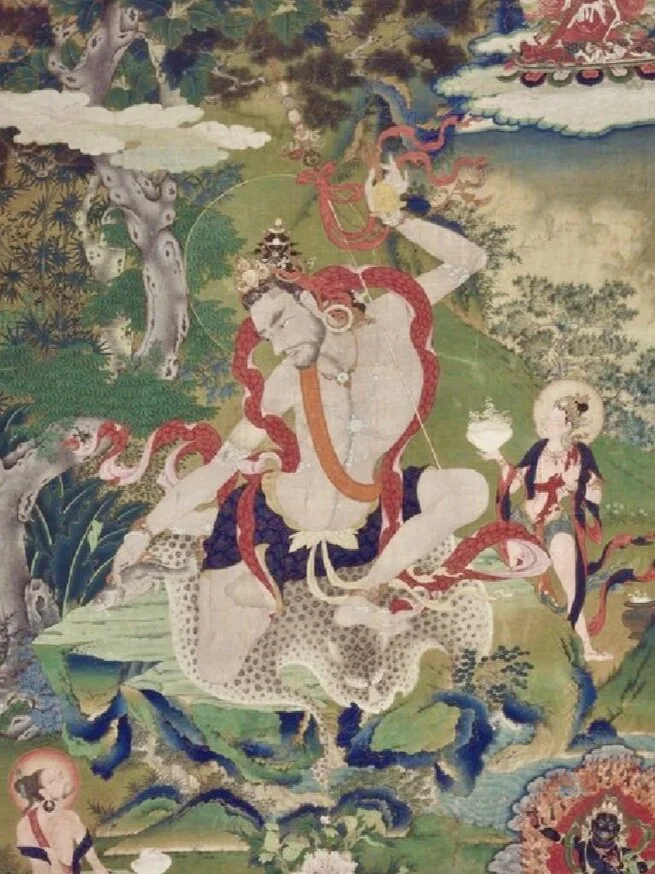Buddhist Vocabulary: Lineage
Lineage: An unbroken stream of spiritual masters through which the sacred teachings of the dharma flow, allow our present-day teachings to be traced back to their original source.
Tibetan: བརྒྱུད་པ
Phonetics: gyüpa
Wylie*: brgyud pa
Sanskrit: parampara
The significance of lineage is that it allows the teachings to pass along in time in a way that is pure, untainted, and ensures the integrity of the transmission.
At Sukhasiddhi Foundation we practice the teachings of the Shangpa lineage (primarily) and the Karma Kagyu lineage. Both are sourced from the primordial Buddha Vajradhara. These teachings were then transmitted through either wisdom dakinis (fully-awakened women) or mahasiddhas (highly realized tantric adepts).
In the case of the Shangpa, the teachings were transmitted to Kashmiri wisdom dakinis, Niguma and Sukhasiddhi from Buddha Vajradhara. In the Karma Kagyu, the teachings were passed from Buddha Vajradhara to the mahasiddha, Tilopa. From that point in time, the teachings were passed along from master to disciple until this present day.
Khedrup Khyungpo Naljor (b. 978/990, d.1127): founder of the Shangpa Kagyu School (Himalayan Art Resources)
When we are studying the masters and in our everyday practice, a source of inspiration and way to connect to the lineage comes in the form of namtar and dohā.
Namtar - Spiritual biography, hagiography
Namtar
Tibetan: རྣམ་ཐར་
Phonetics: nam-tar
Wylie: rnam-thar
short for: Tibetan: རྣམ་པར་ཐར་པ་
Phonetics: nampar-tarpa
Wylie: rnam-par thar-pa
rnam-par: completely, utterly, perfectly
thar-pa: liberated, free, released
Namtar are the stories of the lineage masters’ lives which document their history and journey to spiritual awakening. Namtar is are an expression of the completely liberated experience of a spiritual master which points us in the direction of how we can walk the path that leads to complete liberation. They awaken in us the desire, the aspiration, the passion to know for ourselves what liberation is as well as the perseverance needed to do so.
Karma Kagyu Master, Tilopa (Himalayan Art Resources)
Songs of Realization (Vajra Songs) are often found within namtar.
Sanskrit: Dohā
Tibetan: ཉམས་མགུར
Phonetics: nam gur
Wylie: nyams mgur
Songs of realizations are the inspired poetry of spiritual masters and practitioners at all levels. They are an expression of one’s understanding of the awakened state. They are spontaneous, verbal reflections of the state of awakening or devotion as it is experienced directly in the moment.
Dohās written as early as the 10th-11th centuries directly speak to our experience in this 21st century. The experiences of the great masters resonate through that vast passage of time by way of these inspired songs of realization.
Note: *The Wylie transliteration scheme is a method for transliterating Tibetan script using only the letters available on a typical English language typewriter. Source: https://encyclopediaofbuddhism.org/wiki/Wylie_transliteration



